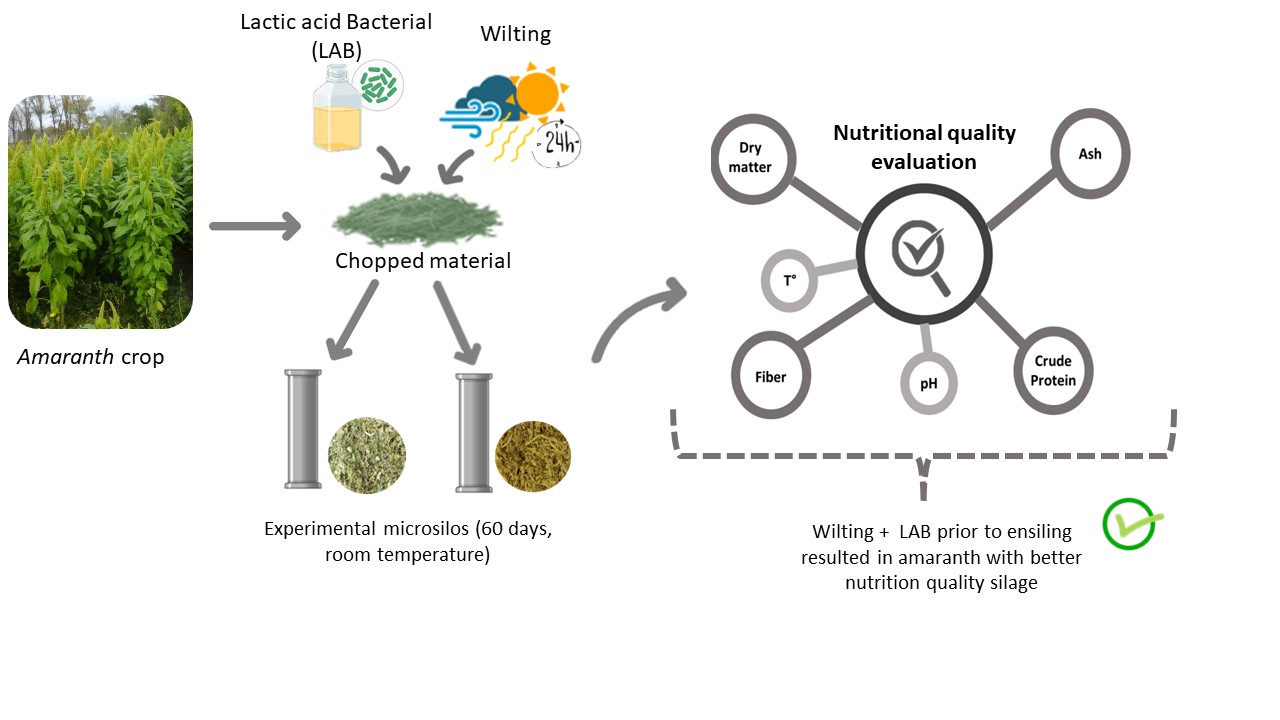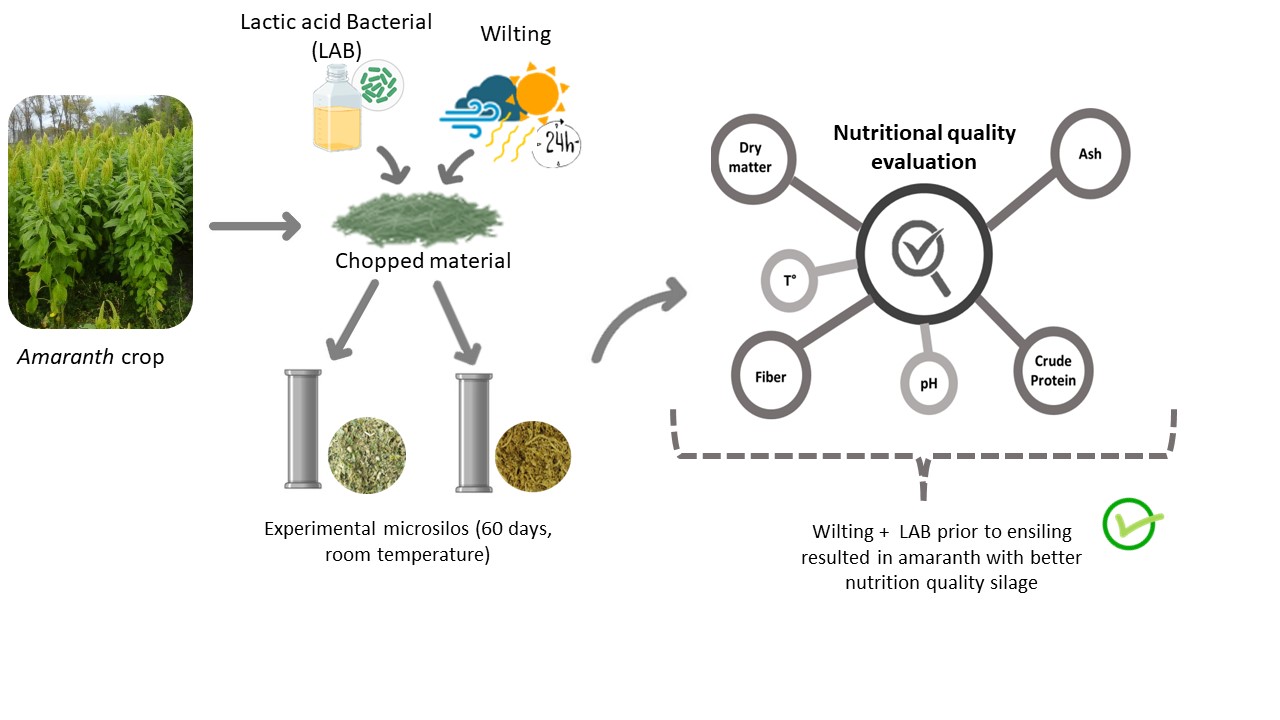Nutritional quality of amaranth (Amaranthus) silage in response to forage airing and addition of lactic bacteria
DOI:
https://doi.org/10.48162/rev.39.128Palabras clave:
valor nutricional, amaranto, ensilado, inoculación, calidadResumen

Climate change is reducing forage availability for ruminants. Previous studies in Northern Patagonia, Argentina, have demonstrated the adaptation of the amaranth crop to these agroclimatic conditions under irrigation. Moreover, this crop is used as forage in marginal areas of the world, given its outstanding productive and nutritional qualities. The objective of this study was to evaluate the nutritional quality of amaranth silage in response to previous wilting and the addition of lactic acid bacteria. The crop was harvested at the milky grain stage and ensiled in experimental microsilos for 60 days. Before ensiling, different treatments (wilting and addition of lactic acid bacteria) were applied. Parameters related to nutritional quality were evaluated, including ash, crude protein (CP), neutral detergent fiber (NDF), acid detergent fiber (ADF), dry matter digestibility (DMD), and metabolizable energy (ME). Simultaneous treatment with air and the addition of lactic acid bacteria before ensiling resulted in the best nutritional quality characteristics of the silage. The most significant results were protein value of 12.7%, 41.1% NDF and 19.1% FDA. The DM and ME were 74% and 2.67 Mcal/kg, respectively. Thus, amaranth silage can be considered an alternative conserved forage for animal feed in this region.
Highlights:
- Amaranth crops as a resilient forage option for regions facing climatic challenges such as northern Patagonia, Argentina.
- The dry matter reduction of the ensiled plant material was <1% and the high protein content of amaranth did not affect the ensiling process.
- Simultaneous treatment such as wilting and addition of lactic acid bacteria to the plant material prior to ensiling resulted in the best nutritional quality characteristics of the silage obtained.
- A synergistic effect was observed among the treatments evaluated, achieving a silage with a digestibility of 74.02% comparable to that of corn silage.
Descargas

Descargas
Publicado
Cómo citar
Número
Sección
Licencia
Derechos de autor 2018 Revista de la Facultad de Ciencias Agrarias UNCuyo

Esta obra está bajo una licencia internacional Creative Commons Reconocimiento-NoComercial-CompartirIgual 3.0.
Aquellos autores/as que tengan publicaciones con esta revista, aceptan las Políticas Editoriales.










.jpg)




